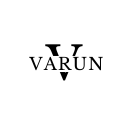Effective market segmentation is crucial for the success of any product or service. By understanding and catering to specific segments within a larger market, businesses can tailor their offerings to better meet the unique needs and behaviours of their customers. This article will explore the concept of behavioural and needs-based segmentation, why it is essential, and how to implement it in your product strategy, supported by theories, principles, and real-world examples.
What are Behavioral and Needs-Based Segments?
Behavioural and needs-based segmentation divides a market based on the behaviours, needs, and preferences of consumers rather than traditional demographic factors. Behavioural segmentation looks at patterns in consumer behaviour such as purchasing habits, brand loyalty, and product usage rates. Needs-based segmentation, on the other hand, focuses on identifying the specific needs that drive consumer decisions.
Example: Consider a fitness app. Behavioural segments might include casual users, regular users, and competitive athletes, each with different usage patterns and levels of engagement. Needs-based segments might include those looking to lose weight, build muscle, or improve general fitness.
Why Segment Your Target Market by Behavior and Needs?
Segmenting your market by behaviour and needs offers several advantages:
- Personalization: Tailor your marketing messages and product features to meet the specific needs of different segments.
- Resource Allocation: Allocate resources more effectively by focusing on the segments that offer the highest return on investment.
- Customer Retention: Enhance customer satisfaction and loyalty by addressing their unique needs and behaviours.
- Competitive Advantage: Stand out in the market by offering solutions that are better aligned with what different segments are seeking.
Case Study: Netflix is a prime example of a company that excels in behavioural and needs-based segmentation. By analyzing viewing habits, Netflix recommends content tailored to individual users’ preferences, significantly enhancing user experience and retention.
How to Segment Your Target Market by Behavior and Needs
- Data Collection: Gather data from various sources, including surveys, purchase history, website analytics, and social media interactions.
- Identify Patterns: Analyze the data to identify common behaviours and needs among your customers.
- Create Segments: Group customers into segments based on the identified patterns.
- Develop Profiles: Create detailed profiles for each segment, including demographics, behaviours, and needs.
Example: A skincare brand might segment its market based on behaviours such as purchase frequency (frequent buyers vs. occasional buyers) and needs such as skin type (oily, dry, combination).
Theoretical Framework: The Jobs-to-be-Done (JTBD) theory, popularized by Clayton Christensen, can be instrumental in needs-based segmentation. According to JTBD, customers “hire” products to perform specific “jobs.” Understanding these jobs helps in creating segments based on the underlying needs that drive purchases.
How to Validate and Refine Your Segments
- Qualitative Research: Conducting qualitative research, such as in-depth interviews and focus groups, allows you to understand the motivations, attitudes, and preferences of your segments. This approach provides rich, detailed insights that can validate your segmentation criteria. Example: A technology company might hold focus groups with different user segments to understand how they use their devices and what features they find most valuable. These insights help refine the segments based on real user feedback.
- Quantitative Research: Use surveys and data analysis to validate your segments on a larger scale. Statistical methods like cluster analysis can help identify distinct segments within your data, ensuring that your segmentation is robust and statistically significant. Example: A retail brand might use customer surveys to quantify the importance of various needs and behaviours, such as price sensitivity, brand loyalty, and frequency of purchase, ensuring that these segments are significant in size and actionable.
- Continuous Monitoring: Market segments can evolve over time due to changing consumer preferences, technological advancements, and market trends. Regularly reviewing and updating your segments ensures they remain relevant and accurate. Case Study: Amazon continuously monitors purchasing patterns and user behaviour on its platform, allowing it to adapt and refine its segmentation strategy. This ongoing analysis helps Amazon stay ahead of consumer trends and provide a personalized shopping experience.
How to Use Your Segments in Your Product Strategy
- Product Development: Create product features and variations that cater to the distinct needs of each segment. By understanding the specific requirements and pain points of each group, you can design solutions that resonate with them. Example: Apple offers different models of the iPhone to cater to various segments, from budget-conscious consumers to those seeking cutting-edge technology.
- Marketing: Tailor your marketing messages and campaigns to address the unique behaviours and needs of each segment. This targeted approach increases the relevance and effectiveness of your marketing efforts. Example: Nike uses behavioural segmentation to target its marketing campaigns. For instance, it creates personalized ads for casual runners, serious athletes, and fashion-conscious consumers, each addressing different needs and motivations.
- Sales: Equip your sales team with the knowledge and tools to address the specific needs of each segment. Training your sales staff to understand and communicate the value propositions tailored to different segments can improve conversion rates. Example: A B2B software company might train its sales team to focus on different features when talking to small businesses compared to large enterprises, ensuring that the pitch resonates with each segment’s unique challenges and needs.
- Customer Support: Offer personalized support that caters to the distinct characteristics of each segment. Understanding the needs and behaviours of your segments allows your support team to provide more relevant and effective assistance. Example: Zappos, known for its exceptional customer service, tailors its support based on customer segments, providing personalized recommendations and solutions that enhance customer satisfaction and loyalty.
Theoretical Framework: The Diffusion of Innovations theory by Everett Rogers can help understand how different segments adopt new products. Innovators and early adopters might be targeted with cutting-edge features, while the late majority may respond better to proven, reliable solutions.
Here’s What Else to Consider
- Segmentation Tools and Technologies: Utilize advanced tools and technologies such as machine learning algorithms, CRM systems, and data analytics platforms to enhance your segmentation efforts. These tools can automate the process of collecting, analyzing, and segmenting data, making your segmentation strategy more efficient and accurate. Example: HubSpot’s CRM platform allows businesses to segment their contacts based on various criteria, automating the process and providing detailed insights into each segment’s behavior and needs.
- Ethical Considerations: Ensure that your segmentation practices comply with privacy regulations and ethical standards. Respecting consumer privacy and using data responsibly is crucial for maintaining trust and avoiding legal issues. Example: GDPR compliance is essential for businesses operating in the European Union. Ensuring that your data collection and segmentation processes are transparent and consensual protects consumer privacy and fosters trust.
- Cross-Segment Synergies: Identify potential synergies between different segments that can enhance your product offerings and marketing strategies. Understanding how segments interact and overlap can uncover opportunities for cross-selling and upselling. Example: Adobe Creative Cloud offers various software solutions tailored to different segments, such as graphic designers, video editors, and photographers. By understanding the overlaps between these segments, Adobe can create bundled offerings that provide added value to customers.
- Scalability: Design your segmentation strategy to be scalable, allowing it to grow and adapt as your business and market evolve. A flexible and scalable approach ensures that your segmentation remains effective in the long term. Example: Salesforce’s CRM platform is designed to scale with businesses, providing advanced segmentation capabilities that grow and adapt as the company expands and its customer base diversifies.
- Customer Feedback: Continuously seek and incorporate customer feedback into your segmentation strategy. Listening to your customers helps you stay attuned to their evolving needs and preferences, ensuring that your segments remain relevant and accurate. Example: Airbnb regularly collects feedback from hosts and guests to refine its segmentation strategy. By understanding the unique needs of different user groups, Airbnb can enhance its platform and services to better meet their expectations.
Segmenting your target market by behaviour and needs is a powerful strategy for delivering personalized experiences, optimizing resource allocation, and gaining a competitive edge. By understanding and catering to the specific behaviours and needs of your customers, you can create more relevant and effective product strategies, marketing campaigns, and customer support initiatives. Employing the right tools and methodologies, and continuously refining your segments based on qualitative and quantitative research, will ensure that your segmentation strategy remains robust and effective in a dynamic market landscape.











